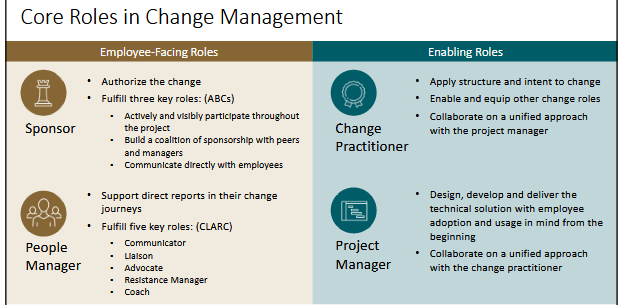Framework 191 Seven Key Principles Required for Change Success
Introduction
Prosci research has identified 7 key principles required for successful change management:

(source: Bryan Carey, 2024)
Principles (7)
i) active and visible executive support/sponsorship (in particular, explain why change is required; actively support the change in words and deeds, especially regarding the stakeholders most impacted by the change journey; some ways to do this involve:
"...- supporting the change by giving constant attention to the change and the need for change management
- championing the change by leading and motivating others in the organisation
- making effective and influential decisions regarding the change, including the ability to align priorities among other leaders in the organisation
- maintaining direct communication with the project management and change management teams and being accessible during the change..."
Prosci, 2016
This senior executive support is one of the greatest predictors of success
"...with extremely effective sponsorship , projects are almost 3.5 times more likely to meet or exceed project objectives than projects with very ineffective sponsorship..."
Prosci, 2016)
ii) structured change management approach (to guide the development and execution of strategies and plans; be flexible enough to handle the unexpected; benefits of a structured approach:
"...- Definition of activities, roles, language, processes, tools and assessments
- Systematic structure results in a consistent and repeatable approach
- Logical, detailed progression of stages
- Easier to understand and explain
- Support for the value of change management
- Identification of gaps and common mistakes..."
Bryan Carey, 2024
In general, any structured approach is better than none:
"...59% of participants who use a methodology reported good or excellent change management effectiveness compared with 26% who did not use a methodology..."
Bryan Carey, 2024

(source: Bryan Carey, 2024)

(source: Bryan Carey, 2024)
iii) employee engagement and participation (the earlier the impacted stakeholders are involved in the change initiatives, the higher the rate of adoption and usage from them, ie active and early participation is axiomatic.
NB change management is more than:
- a communication and training plan
- handling resistance
- making sure everyone is happy.
It is about people's adoption and usage to deliver project outcomes, ie capturing project benefits from employee adoption and usage of the change, ie driving adoption and usage to deliver project outcomes.

(source: Bryan Carey, 2024)
These core roles can overlap with a person playing more than 1 role, eg one person could be a sponsor and project manager simultaneously.
NB
"...employees' adoption and usage of change has a direct concrete impact on achieving expected results and outcomes..."
Bryan Carey, 2024
Be aware how a person's job can be impacted by change, ie the 10 aspects of impact on a job by change:

(source: Bryan Carey, 2024)
"...not all groups are impacted by change in the same way, or to the same degree. Impacted groups benefit from an individualised approach..."
Bryan Carey, 2024
NB Encourage buy-in and involvement of middle management as they can be the most likely group to resist the change initiative.)
iv) frequent and open communications(even though change management is more than communication, communications is critical for effective change and includes:
"...- delivering change messages in a timely and transparent manner
- using effective channels and communicating frequently
- tailoring messages for the intended audience
- including clear and compelling reasons for the change and implications of not changing..."
Prosci, 2016
Research has shown that employees have preferences for different groups when communication, ie employees want to hear the organisational implications from senior management; however, on the personal impacts of changes, they prefer to hear from their immediate boss.)
v) dedicated change management resources(includes:
"...- appropriate amount of funding and resources
- dedicated resources with change management experience
- a change team with a community of flexible, ambitious, decisive, collaborative individuals..."
Prosci, 2016
Resources include finances, time, expertise, capability, training, etc.
In addition, people must be responsible and accountable for different activities in the change initiative.)
vi) integrated engagement with project management(this needs to occur from the start of the project, ie planning, to implementation; examples of how to achieve this:
"...- fully integrate the change management and project management approaches
- integrate change management activities into project requirements
- support collaboration between projects in change management teams to develop the overall project plan..."
Prosci, 2016)
vii) use of people managers (this will encourage employee engagement and participation in the change initiative, which will drive employee adaptation and usage, which in turn generates organisation results and outcomes; this involves:
"...- making employees aware of the need for change
- conducting training
- involving employees in project design
- hosting special events that promote the change..."
Prosci, 2016
